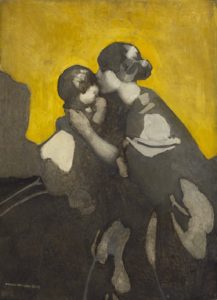Dear Integral Meditators,
This weeks article focuses on mindfulness of your inner child, and ways to connect to its power in ways that can add to your quality of life and wellbeing.
For those in Singapore, a reminder of the Meditations for developing the language of your shadow self workshop this coming Saturday, 2-5.30pm.
In the spirit of bright shadows,
Toby
The shadow is
The ‘shadow self’ is that part of our mind and self that we have rejected and pushed so deeply into our unconscious awareness such that often we are not even consciously aware that it exists. However, from its position within the unconscious mind our shadow self remains active, influencing our behaviour and causing us to behave in ways which seem to be difficult for us to understand. The shadow has both a ‘dark’ side and a ‘bright’ or golden side.
The child self is
That part of us that is child-like in nature. You could say it has three aspects:
- That part of us that is simply child like in nature; playful, naive, creative, innocent, gullible, needs looking after and so on
- The historical child, that is the child within us whose character has been shaped and informed by our own literal historical upbringing; experience with parents, peers and other significant others, what happened to us in school, how we were treated and learned to gain approval and so on. The child within us now that is a product of our personal historical experience, and our response to that
- The spiritual child within us – that part of us that is ever young, ever new, ever creative, ever both innocent and wise, whose light helps us begin again each time we burn out.
The shadow child is
Any part of our child like nature, historical child or spiritual child that we have repressed and rejected, that we are afraid of, that we have neglected, which remains unhealed and damaged, which we have turned away from.
Why you need to connect and make friends with your shadow child
Because if you do not do so parts of your damaged, fearful and disowned child will continue to sap your energy, sabotage your happiness and make joy, love and wellbeing difficult goals for you.
Because if you do not the radiant, optimistic, strong joyful and creative child that lives within you will remain un-expressed, un-enjoyed and undiscovered.
A personal example
Earlier this week I went on holiday to the beach. On the first night I woke up in the early morning in my beach hut. For some reason I started thinking about things like insurance, what could go wrong in my life and was overwhelmed by a feeling of stress and anxiety. I asked to my mind “Why are you feeling so anxious all of a sudden?” A small, scared, high voice replied “Because the world is such a large and scary place”. That voice was an example of one of the ways in which my shadow child exists and speaks within my psyche. I relaxed, opened to the feelings of my child self, accepted them with care and allowed them to wash over and through me. After a while they subsided and I went back to sleep feeling fine.
From this short example you can see that one of the reasons we often reject our child self is because the voice that it speaks in is so child-like. We often dismiss it as nonsense and bury the feelings that are attached to the voice and the inner child that it came from. As a result the fear remains within us, and continues to affect us even thought we have dismissed it from our conscious mind.
To connect to our child self we need to connect with it on its level without judgment, to learn to speak its language.
Article and pictures © Toby Ouvry 2019, you are welcome to use or share this article, but please cite Toby as the source and include reference to his website www.tobyouvry.com
All Courses at Integral Meditation Asia
Ongoing on Wednesday’s, 7.30-8.30pm – Wednesday Meditation Classes at Basic Essence with Toby
Ongoing on Tuesday evenings, 7.30-8.30pm – Tuesday Meditation Classes at One Heart with Toby (East coast)
Monday 6.15-7.15 & Wednesday 12.15-1.15 – Integral Meditation classes at Space2B on Stanley Street
Saturday mornings 9-10.15am, March 30th, April 27th – Qi Gong workout and meditation class
FOR BEGINNERS: Saturday 30th March, 11-12.30pm – Get your meditation practice started now- The shortest and most time effective meditation workshop ever
Saturday 30th March 2-5.30pm – Meditations for developing the language of your shadow self
APRIL
Tues & Weds 2nd/3rd April – Monthly astrological meditation – Aries – I Am: Developing confidence in yourself and your identity in the world
Saturday 13th April 9.30am-12.30pm – Meditations for transforming negativity and stress into positivity and enlightenment
Integral Meditation Asia
Online Courses * 1:1 Coaching * Books * Live Workshops * Corporate Mindfulness Training *Life-Coaching * Meditation Technology

 Unstructured mindfulness – Turning and facing yourself
Unstructured mindfulness – Turning and facing yourself
 Dimensions of mindful perception and understanding
Dimensions of mindful perception and understanding


 The body within the body (infinitely small, infinitely big)
The body within the body (infinitely small, infinitely big) Making your body your castle
Making your body your castle
